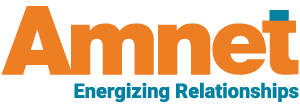In 2025, students are reshaping the landscape of higher education, demanding college textbooks that align with their digital fluency, personalized learning preferences, and ethical values. As a result, educational institutions, publishing houses, and content makers are adjusting and introducing fresh ideas.
Digital-First and Interactive Content
Learners prioritize accessibility and interactivity in their educational materials. Digital books, which have interactive features and are updated regularly, are often used instead of traditional print books. With the help of digital and educational content development, this shift in teaching becomes seamless while learning resources become up-to-date and engaging.
The need for individual learning paths has caused the introduction of AI platforms that customize learning materials based on each person’s needs. Leading education publishing companies in the field are cooperating with schools to design special curricula that boost students’ interest and ability to understand new knowledge.
Emphasis on Accuracy and Quality
With the proliferation of information, Gen Z students hope their textbooks are updated and error-free. Many publishers now rely on professional book editing services to preserve their reputation and ensure everything is of high quality.
Additionally, representation and inclusivity are paramount for Gen Z. Textbooks are expected to reflect diverse perspectives and promote equity. Educational content providers are tasked with ensuring content is free from bias and culturally sensitive, aligning with the values of this generation.
Moreover, editorial teams are responsible for checking and approving the use of images, indigenous information, and sources during the publishing process.
Because Gen Z thinks differently, giving more importance to responsible publishing is required to continue being relevant and credible in higher education. To encourage inclusivity and equality in education, editorial, copyediting, and scientific educational publication services are being increasingly relied upon.
While learners are highly engaged with digital content, their preferences for textbook formats are nuanced. A study by the American Library Association found that 54 percent of Gen Z and millennials visited a physical library within the past year, and over half of those also borrowed from the library’s digital collection. This indicates a balanced preference for print and digital formats, suggesting that while digital access is important, physical copies still hold value for this generation.
Overall, in 2025, learners residing in the United States are interested in books for courses that can be opened online, are inexpensive, and have activities. To respond to the needs of today’s students, publishers and schools are investing more in these aspects to keep learning materials easy to use and interesting.
In conclusion, Gen Z’s preferences are leading to new approaches in developing, editing, and delivering college textbooks. Because students now expect personalized, inclusive, and accurate online content, publishers and academic institutions are revising their old practices to introduce new ones.
Thanks to editorial support, content development services, and modern policies from the government, the higher education environment is improving to suit the current generation of students. Because educational stakeholders are investing in advanced tools and approaches, new college textbooks will be more flexible, interactive, and helpful for the current generation.
To meet the evolving needs of today’s learners, Amnet offers comprehensive digital learning solutions that support the shift toward interactive, accessible, and inclusive content. From developing interactive, accessible content to integrating personalization and ensuring editorial accuracy, Amnet partners with educational institutions and publishers to transform traditional textbooks into engaging, inclusive digital experiences. Partner with us to deliver learning materials that are flexible, of high quality, and aligned with Gen Z’s expectations.
Source



